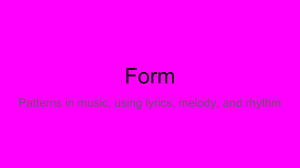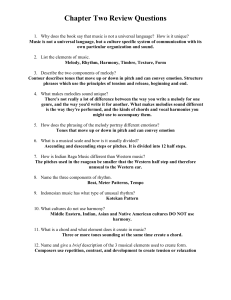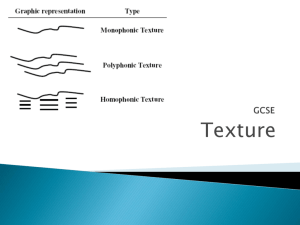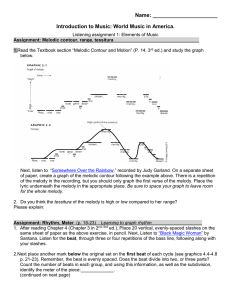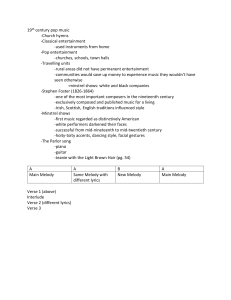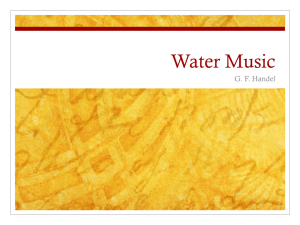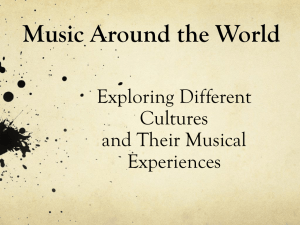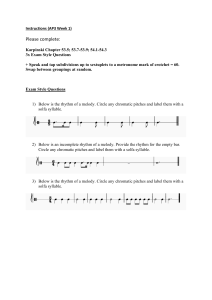Interpretation taxonomy 2012 by Adam Yee
advertisement
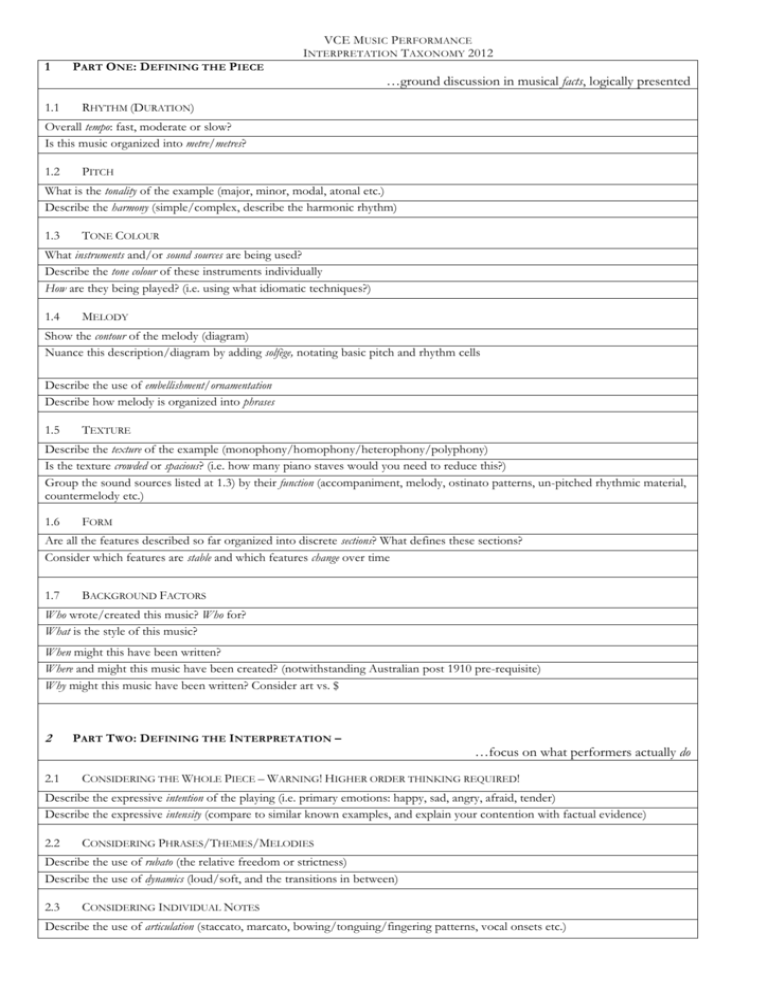
VCE MUSIC PERFORMANCE INTERPRETATION TAXONOMY 2012 1 PART ONE: DEFINING THE PIECE …ground discussion in musical facts, logically presented 1.1 RHYTHM (DURATION) Overall tempo: fast, moderate or slow? Is this music organized into metre/metres? 1.2 PITCH What is the tonality of the example (major, minor, modal, atonal etc.) Describe the harmony (simple/complex, describe the harmonic rhythm) 1.3 TONE COLOUR What instruments and/or sound sources are being used? Describe the tone colour of these instruments individually How are they being played? (i.e. using what idiomatic techniques?) 1.4 MELODY Show the contour of the melody (diagram) Nuance this description/diagram by adding solfège, notating basic pitch and rhythm cells Describe the use of embellishment/ornamentation Describe how melody is organized into phrases 1.5 TEXTURE Describe the texture of the example (monophony/homophony/heterophony/polyphony) Is the texture crowded or spacious? (i.e. how many piano staves would you need to reduce this?) Group the sound sources listed at 1.3) by their function (accompaniment, melody, ostinato patterns, un-pitched rhythmic material, countermelody etc.) 1.6 FORM Are all the features described so far organized into discrete sections? What defines these sections? Consider which features are stable and which features change over time 1.7 BACKGROUND FACTORS Who wrote/created this music? Who for? What is the style of this music? When might this have been written? Where and might this music have been created? (notwithstanding Australian post 1910 pre-requisite) Why might this music have been written? Consider art vs. $ 2 2.1 PART TWO: DEFINING THE INTERPRETATION – …focus on what performers actually do CONSIDERING THE WHOLE PIECE – WARNING! HIGHER ORDER THINKING REQUIRED! Describe the expressive intention of the playing (i.e. primary emotions: happy, sad, angry, afraid, tender) Describe the expressive intensity (compare to similar known examples, and explain your contention with factual evidence) 2.2 CONSIDERING PHRASES/THEMES/MELODIES Describe the use of rubato (the relative freedom or strictness) Describe the use of dynamics (loud/soft, and the transitions in between) 2.3 CONSIDERING INDIVIDUAL NOTES Describe the use of articulation (staccato, marcato, bowing/tonguing/fingering patterns, vocal onsets etc.)




